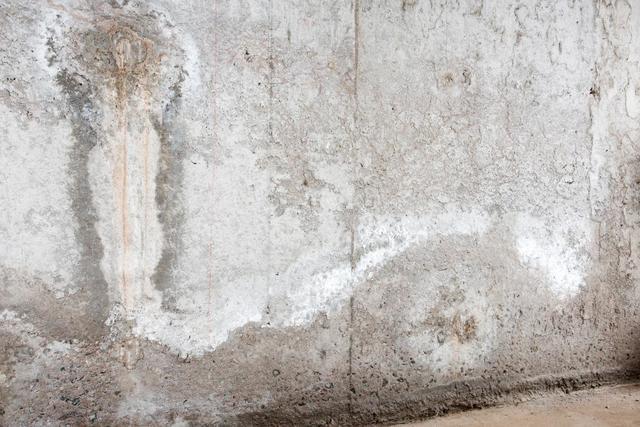What's The White Powder On My Basement Walls? Is It A Serious Problem?

You see it in many basements - a white, powdery substance that stains the walls. It's unsightly and kind of looks like mold. But what is it and how did it get there?
Good news: it's not mold, or toxic in any way.
It's a substance called efflorescence and it's a residue that forms when water carries soluble salts from deep within concrete or mortar walls and deposits them on the wall surface when it evaporates.
Is it a concern? Why did it randomly show up? And how can it be prevented? We go over everything you need to know about efflorescence in this blog post. Let's get into it.
What is efflorescence?
Efflorescence shows up on surfaces like concrete, retaining walls, stone, and stucco. It's a powder-y salt deposit that appears when water is present in or on your block walls.

Efflorescence is not dangerous or harmful and easy to remove. However, it can often be a huge sign there's a water drainage issue in your basement.
How does efflorescence form?
In order for efflorescence to form, it needs three components.
1. Salt. Building materials like concrete or stone naturally have a lot of salt in them.
2. Water. When water comes into contact with your wall, it will dissolve the salt that lives within the wall material. Once that water evaporates, it moves the salts to the surface and leaves behind a crystalized white powder, otherwise known as efflorescence.
3. An entry point. In order for water to crystalize the salts on your wall, it first needs to find its way in through an entry point. Wall cracks, concrete pores, and joints are the most common entry points.
Do you have a basement water problem?
Efflorescence on your walls is a huge indicator that some type of moisture was or is in your basement.

There are two types of efflorescence: primary or secondary. To know if you have a water problem in your basement, you first need to know what type of efflorescence is happening on your walls.
Primary efflorescence happens because of the concrete manufacturing process. If the manufacturers used too much water in the concrete mix, that water will eventually work its way to the surface. This means it's not a basement water issue; just a bad concrete mix.
Secondary efflorescence, however, is the one to be concerned about. This efflorescence forms from an outside source of water. Whether it's rain, groundwater, or condensation, water has traveled through an entry point into your home.
But how do you know which one is happening on your walls? It's easy to find out. All you have to do is clean your walls. If it returns, it's clear that is secondary efflorescence and there is an entry point somewhere in your home.
If it doesn't return, then that was primary efflorescence and there's no basement water issue going on in your home.

How to clean
Efflorescence is easy to clean. These are the three best ways to remove it:
- Pressure wash.
- Diluted vinegar.
- Brush it off.
How to fix and prevent efflorescence
Efflorescence can be washed off, but the underlying problem must be solved before the stain reappears.
Water will still find it's way in through the initial entry point. And if left untreated, efflorescence will slowly deteriorate your foundation.
To prevent it from happening again, you first need to find the entry point.

Walk outside your home and look for issues. Is there anything directing water towards your foundation or basement?
Look at your sprinklers. Make sure they're aimed away from your house.
Make sure your gutters aren't clogged and draining properly several feet away from your home.
If everything on the exterior is working, inspect your home's interior drainage system. Check your french drain, sump pump, and vapor barrier. Is anything clogged?

If you still can't find the entry point, the next thing to do is schedule a foundation inspection.
Schedule a foundation inspection today
Efflorescence is a non-structural defect. But it's often a symptom of a bigger problem.
The most common water entry point is foundation cracks. And foundation cracks can result in extreme wall failure and water damage.

It’s important to address the issue as soon as possible to figure out how severe the water damage and cracks are.

At Midwest Foundation Repair, we offer a free, no-obligation inspection of your foundation walls. We get to the root of the problem and check for all water sources, inspect your foundation, and then give you a permanent solution to prevent any further water damage or foundation failure.
Please call 515-289-1606 or reach out to us online to schedule a free, no-obligation estimate.

